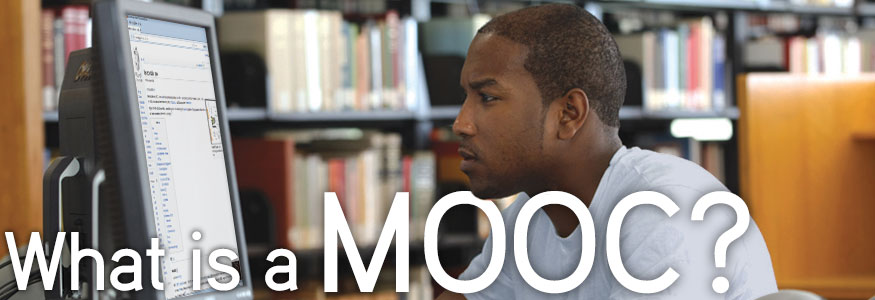
Online courses have been around for a while now, but the perception of them is rapidly changing with the new phenomenon that everybody refers to as “MOOC’s”. So what is this MOOC, anyway?
As it turns out, a MOOC (which stands for “massive open online course”) is an interactive online course that has the potential to engage many, many students at one time. This format allows for users to easy implement peer reviews, virtual group collaborations, and educational feedback.
MOOCs are typically structured as online video lectures and, in some cases, the video may pause at certain times throughout the lecture to ask questions and facilitate discussion to continue watching. The classes are mostly assessed by exams and peer-reviewed assignments.
So how big is this MOOC phenomenon? According to Inside Higher Ed, more than 1.5 million people have registered for MOOCs through three of the largest platforms in Coursera, UDACITY, and edX. Why this explosion of interest? MOOCs are free, registration is open to all, and you can take classes nearly anywhere with an Internet connection.
The three platforms mentioned above offer certification and possible school credit if accepted by the institution — and SUNY is in!
SUNY has this year partnered with Coursera to offer all SUNY campuses the opportunity to use MOOCs as one element of the new online initiative Open SUNY. Our New York system is the largest to partner with any MOOC provider and aims to add 100,000 students within three years. It is positioned to help students shorten time to completion, thus lowering realized debt and helping maximize employment opportunities.
Chancellor Zimpher is excited to grow SUNY’s impact:
Open SUNY will be the largest online learning environment in the world. By bringing every online program we offer together under one umbrella, SUNY students will have unprecedented access to faculty expertise and course availability, significantly increasing their opportunities for timely degree completion and success both in school and after graduation. Not only will Open SUNY provide students the ability for students to save money, but also can provide earlier graduation completion.
A combination of traditional and online courses, Chancellor Zimpher said SUNY aims by 2015 for 25% of students to graduate in three years. Furthermore, Open SUNY can potentially lessen the system’s loan default rate by 5% in 5 years.
MOOC’s not only provide benefits for students, but also potential benefits for universities. Because the main property of a MOOC is scalability, offering classes this way helps improve the reputation and familiarity of the host university. David Leebron, President of Rice University, says that “putting quality courses online allows a smaller school like Rice to compete with larger or more well-known schools” and points out that for smaller, historically more isolated colleges like Rice, “size literally doesn’t matter” in the virtual world.
MOOC’s will continue to change the face of education — and SUNY is proud to lead the way!



